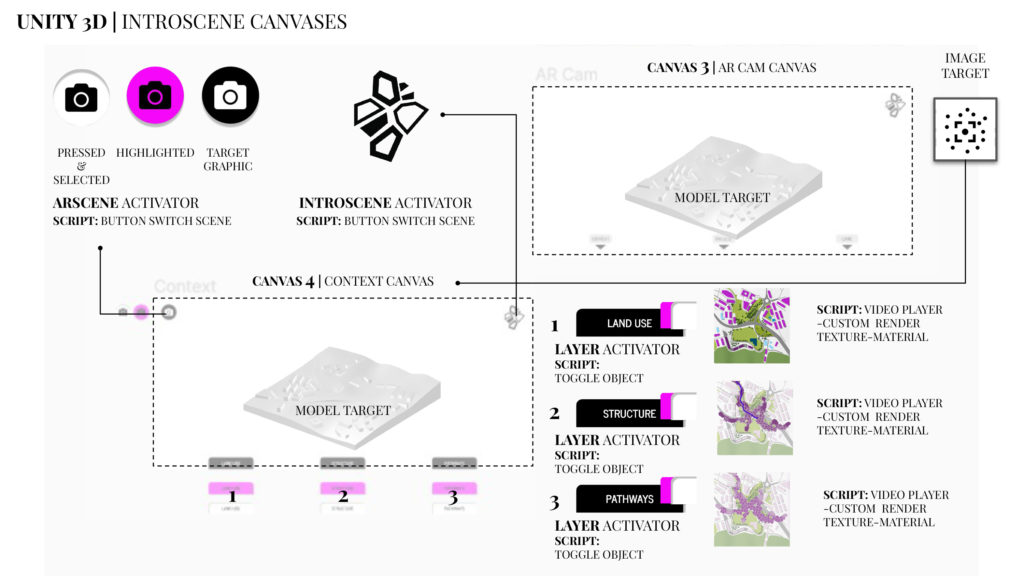Introduction
The ‘Urban Park Puzzle’ project explores the use of Augmented Reality (AR) in urban design. Using Unity Engine, we investigate the various applications of AR in the creative process, from design to realization. Our project aims to present the design components and processes that unite the bridge in a fun and interactive way through the use of a puzzle game.

Context
Eskurtze Park is a green urban park occupying an area of 7 hectares, located on a slope on the southern edge of the city of Bilbao, Spain. The bridge is an urban platform that stitches the surrounding green spaces together and integrates important facilities, sports fields, and pedestrian pathways altogether which was developed through computational design tools.

We incorporated augmented reality to visualize the design process by producing a physical model of the terrain and design intervention. The terrain model was fabricated using CNC milling, while the design intervention – the bridge – was created using 3D printing techniques.

Interaction
In Urban Park Puzzle, we used Unity software to create an augmented reality (AR) app that connects the physical and virtual worlds. We achieved this by training a model target with the digital model used for CNC milling and 3D printing. This enabled the software to identify the physical model, projecting proposed interactions via an Android device.

The app consists of two main screens. The first is an introduction scene that provides users with information about the project and enables them to view more details by toggling buttons. It includes two canvases: a loading scene and the main scene. A third canvas is a loading GIF that takes users to the next scene.

The second screen is the AR scene, which includes three canvases triggered by three image targets. The Context canvas has three layers – Landuse, Structure, and Pathways – all projected as videos on a mesh. These animations explain the design process step by step, enabling users to navigate through the design steps for better comprehension.


The Project Canvas includes the Voronoi structure and three buttons – Greenery, Pergola, and Canopy – which, when turned on, form a complete structure. This provides users with more detailed information about the components of the bridge.

The Game canvas provides a playful environment where users can interact with the model by playing a puzzle game that requires them to assemble the pieces of the bridge within a given time frame. A timer display at the top shows users how much time they have left to complete the puzzle. The canvas also includes a hint button, which, when turned on, shows users the profile of the bridge. Once the user completes the puzzle, they can share it on social media using the share button on the screen, which takes a screenshot of the puzzle and posts it on their social media accounts.

Overall, Urban Park Puzzle provides users with a unique and interactive way to explore the design process of the Voronoi bridge, allowing them to understand the different components and design choices.
What’s Next?
Our next steps involve adding challenges for users to rearrange park zoning, introducing interactive elements to design the landscape, and integrating data to show real-world impacts. This will provide a comprehensive and creative platform for users to design parks while considering environmental factors.

